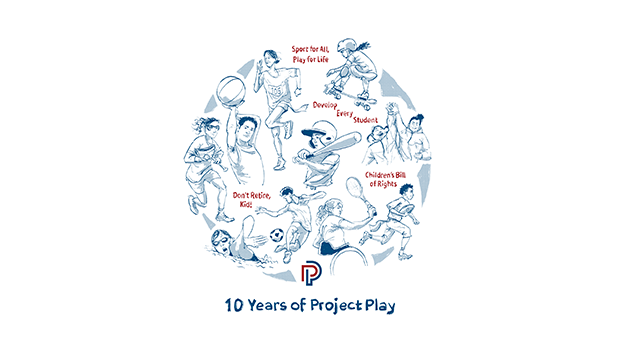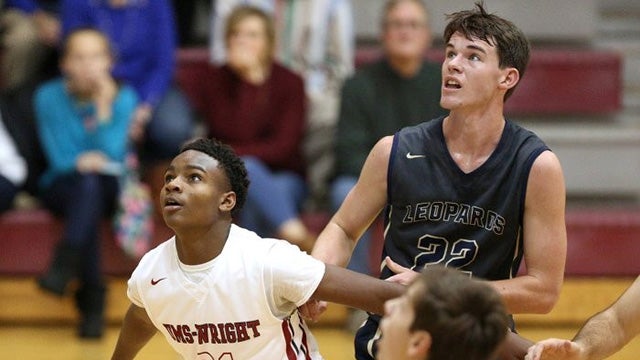
The recently released Project Play report “Sport for All, Play for Life: A Playbook to Get Every Kid in the Game” identifies eight key strategies that eight key sectors can use to give all kids the opportunity to be active through sport.
The report also recognizes the importance of developing backbone organizations that can sustain progress. Recognizing this, and the pioneering work in New Orleans of the Laureus Sport for Good USA Foundation, the Aspen Institute Sports & Society Program asked Edwin Moses, legendary-track-hurdler-turned-sport-for-development-expert, to tell us what Laureus has learned about the role of such an organization at a city level.
On Feb. 25th at the 2015 Project Play Summit, Moses will join a panel moderated by Aspen Institute President and CEO Walter Isaacson where some of these ideas will be explored.
In New Orleans in 2010, 34 percent of high school students were obese. By 2012, the child poverty rate was 41 percent in the city, higher than the US rate of 23 percent. There became a pressing need to provide more youth access to free or reduced-cost sport for development programming. So in 2012, Laureus USA began investing in the community and actively listening to locally led organizations about their challenges for bringing their impact to scale. Many sport for development programs were being created or expanded to serve the community, but they were working in silos and competing for resources.
In 2014, Laureus USA launched a collective impact coalition in New Orleans under our Model City Initiative, which aims to positively change the community through sport. This coalition is intended to create a framework for stakeholders to work together effectively in hopes of improving opportunities for youth.
This year, we learned seven things about how to set up a coalition and become its backbone support organization.
- Target a long-term problem. A collective impact coalition should be used to target a problem that needs systems-level change. We initially set out to unify sport for development in New Orleans and reduce the fragmented nature of our sector in this community.
- Build strong relationships for long-term engagement. Laureus USA spent two years getting to know the individuals in the community who work in sport for development, local government, nonprofits, and members of the public whose lives are impacted by those groups.
- Listen first. To be a great backbone organization, we had to understand the community’s needs prior to taking action. Laureus USA spent two years listening to community stakeholders, the challenges they faced, and brainstorming what resources would be helpful and how to access them. For example, we heard from many stakeholders that their biggest issue was capacity, so we worked with our national patron Mercedes-Benz USA to ensure we’d have the financial resources necessary to provide capacity-building grants.
- Set realistic expectations for individuals in the coalition. As the backbone organization, it’s important for us to recognize this isn’t our stakeholders’ primary role. We’re asking people who are working toward their missions at their organizations to do additional work to achieve the objective of the coalition. We’ve been fortunate to engage with passionate and committed sport for development professionals who want to effect true change in New Orleans. In our interactions with this group, we’ve been mindful of asking for a reasonable commitment of time and effort in order for the group to achieve its collective vision.
- It’s about balance. We are intentional about balancing our role leading on work and asking the community to work alongside us. There are times the group wants to be engaged in a process and other times where they are looking for direction. We’ve learned that in order to achieve this balance we have to be very cognizant of our stakeholders’ resources such as time and expertise. We’ve asked for volunteers to lead working groups within the coalition in order to instill a sense of ownership and accountability amongst the members; our role has been to set up structures and increase communication so that those volunteers can be successful.
- Rely on local expertise. We’ve found that it is important to have a local person managing the coalition and keeping in regular communication with its members.
- Set a SMART objective. For any collective impact coalition, you have to create a clear vision statement. As a backbone support organization, it was our role to organize working sessions for the coalition members to determine their objective. In New Orleans, the coalition determined its goal is to create a community in which all young people have universal access to high quality sports and physical activities that promote physical well-being, social-emotional development, and healthy communities.
We’re looking for a lasting impact to be made on this community, so we recognize that the process will take time. We’ve set achievable and measureable markers for success along the way so we can see the vision coming to life in steps and keep everyone motivated. The first report of data we’re collecting within the community was released in 2014. We hope that over time we’ll be able to demonstrate the coalition’s impact on the young people living below the poverty line in New Orleans. We’re committed to being a strong backbone support organization so that the coalition achieves its mission.
RELATED CONTENT:

